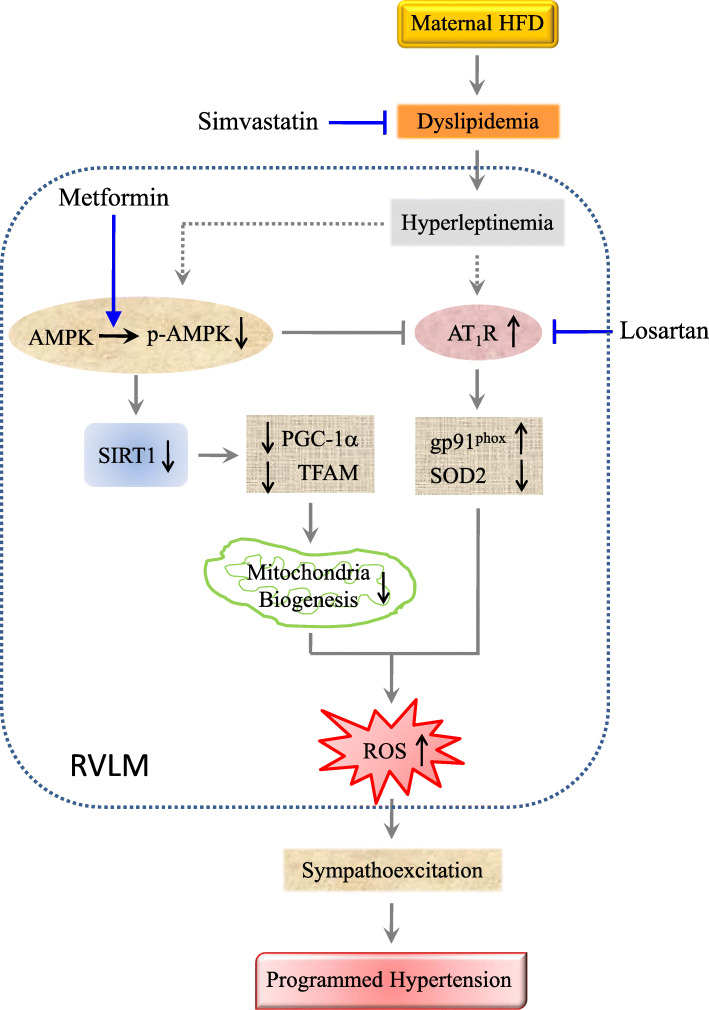Fig. 8.
Schematic depiction of the contribution of AMPK/SIRT1 signaling in RVLM to oxidative stress-associated programming of hypertension in young offspring exposed to maternal high fructose. Circulatory dyslipidemia programmed by maternal HFD exposure during gestation and lactation increases leptin level, which may in turn increase AT1R expression and inhibit AMPK phosphorylation in RVLM. AT1R overexpression leads to tissue oxidative stress via an increase in gp91phox and decrease in SOD2 expression. Suppressed AMPK activation results in inhibition of SIRT1 expression and its downstream signals, PGC-1α and TFAM, followed by tissue oxidative stress through the reduction in mitochondrial biogenesis. Suppressed AMPK activation also augments AT1R expression that promotes further oxidative stress. Accumulated ROS in RVLM contributes to the programmed hypertension in young HFD offspring via sympathoexcitation. The hypertension programming in HFD offspring could be protected by treatments with simvastatin to reduce dyslipidemia and hyperleptinemia; metformin to activate the AMPK/SIRT1 signals, and losartan to antagonize AT1R activation in RVLM. Arrows indicate activation; bar-headed lines indicate inhibition. Solid line denotes data from the present study or existing literature; dotted line denotes potential connections that require further documentation

